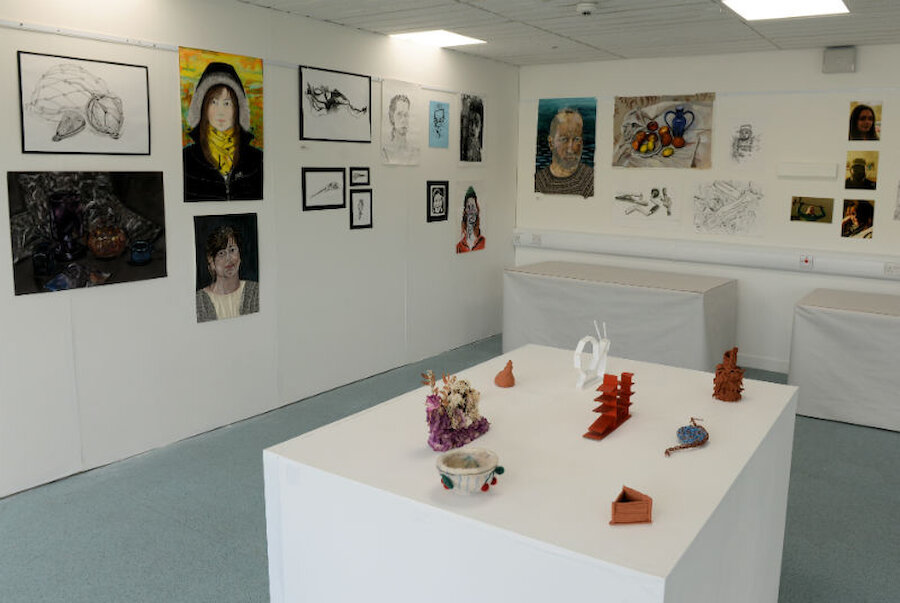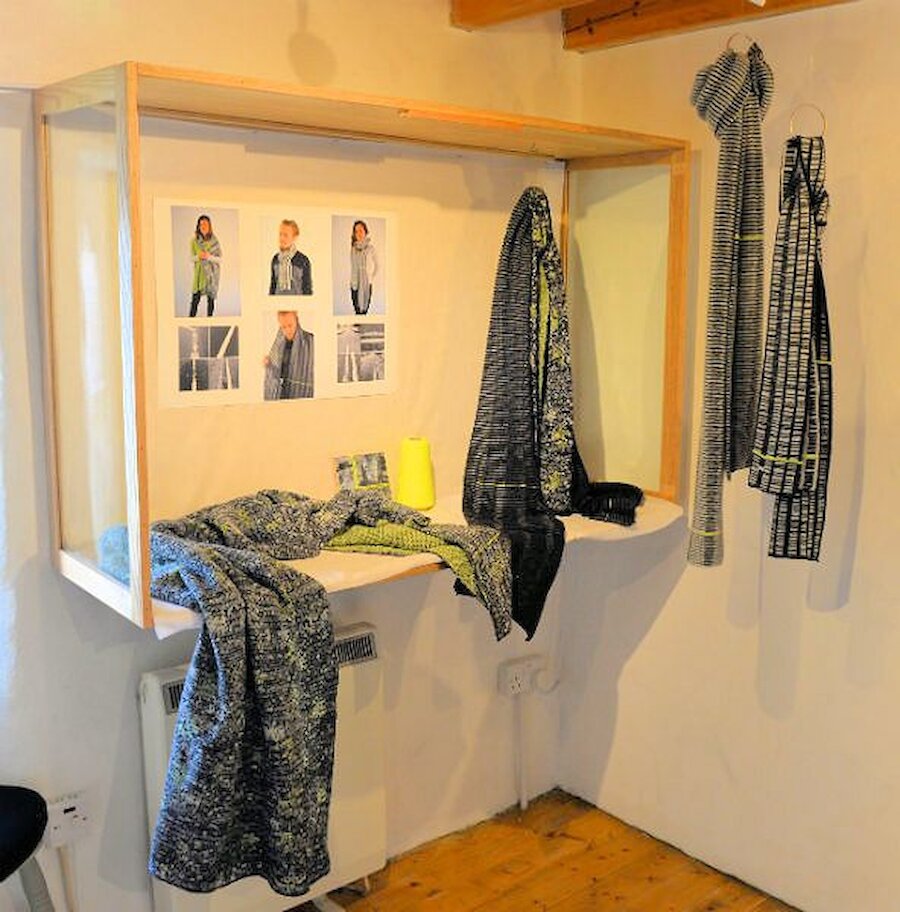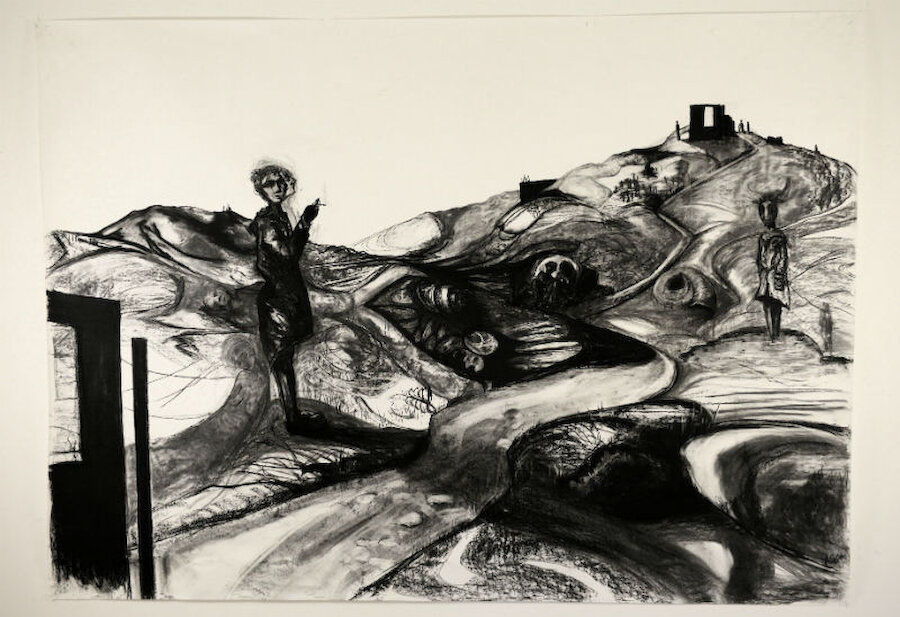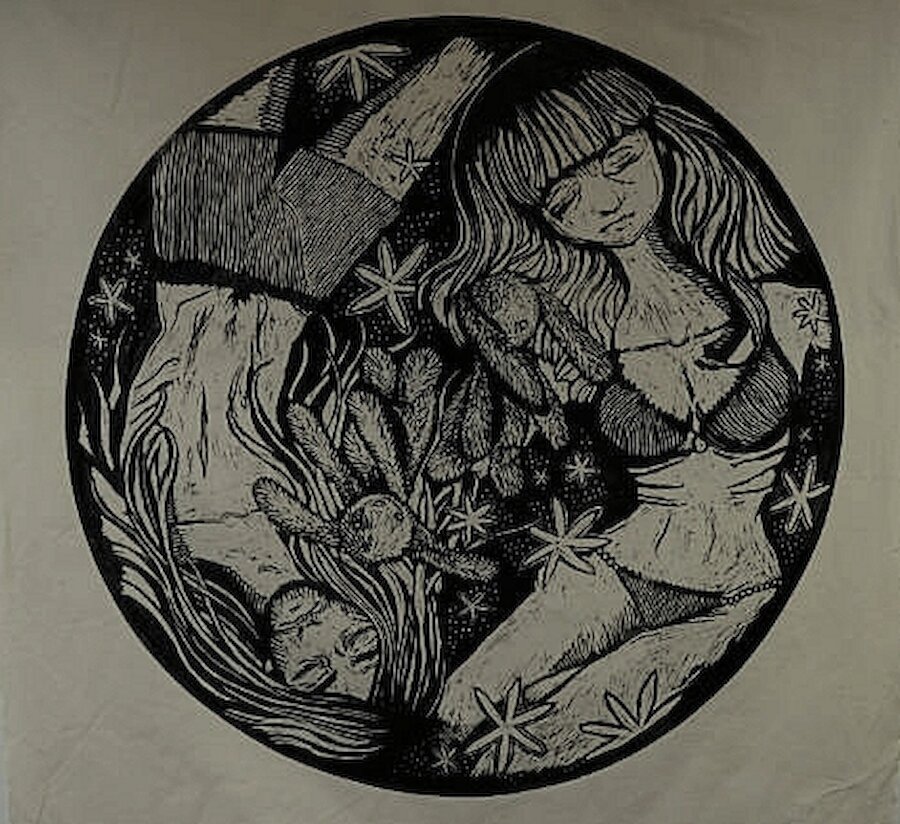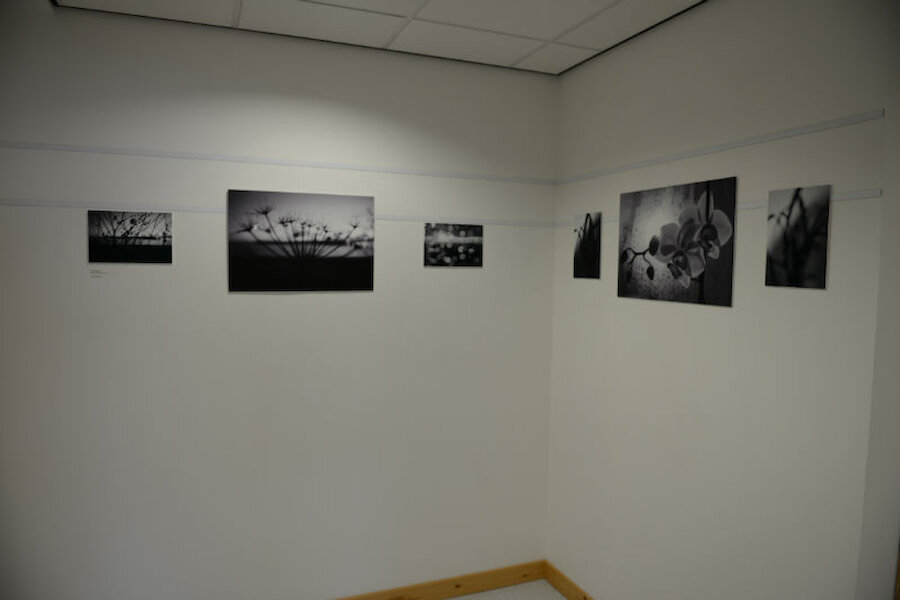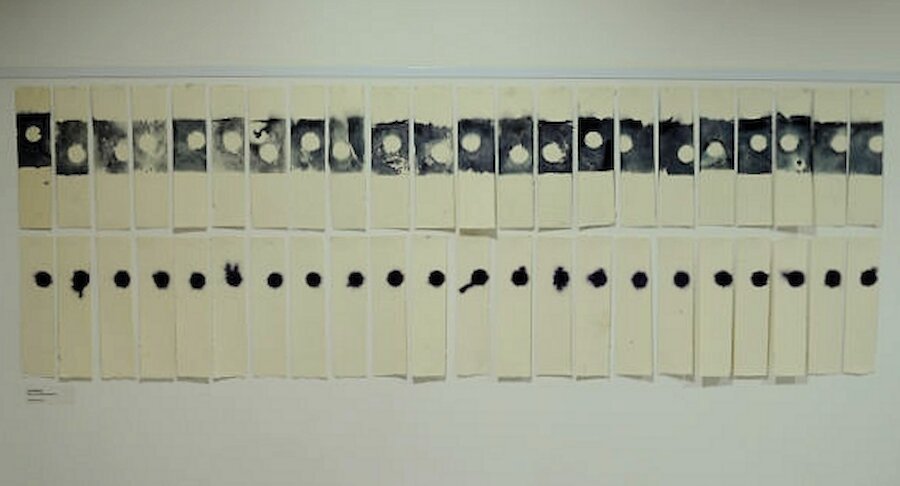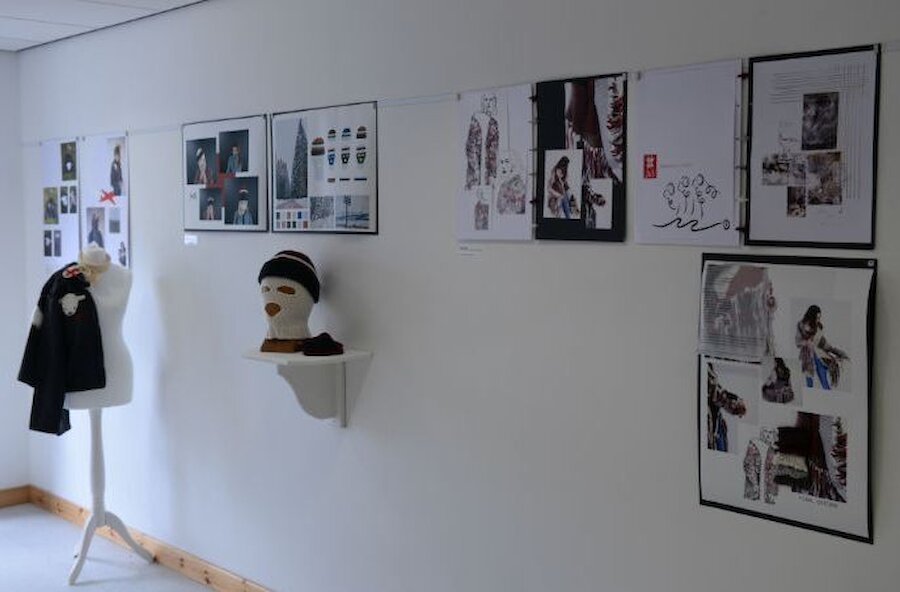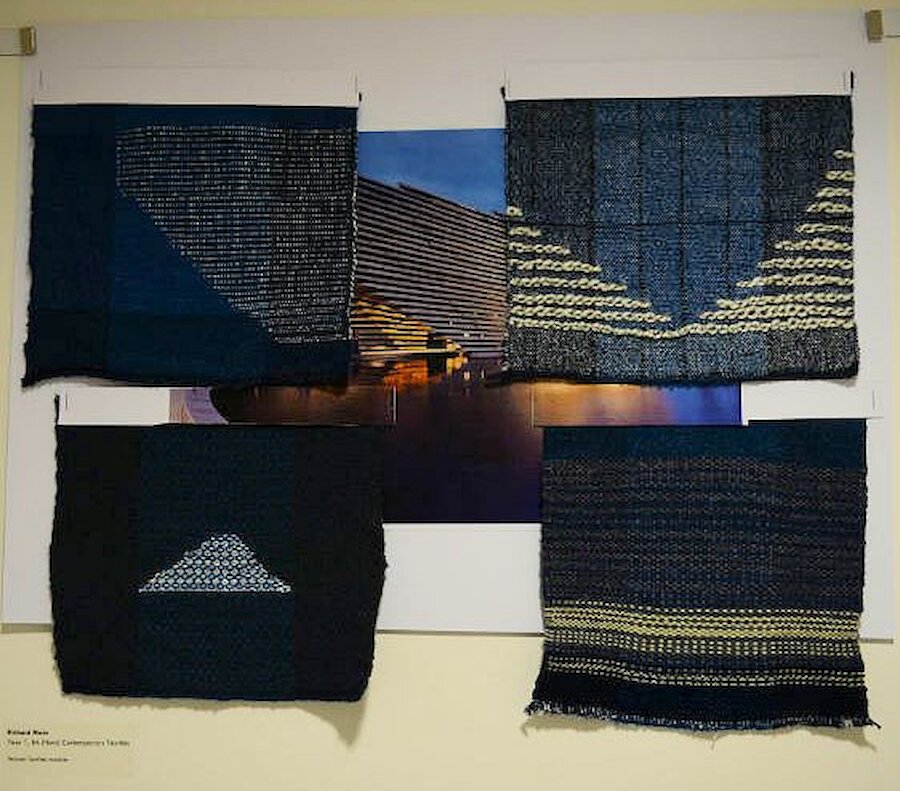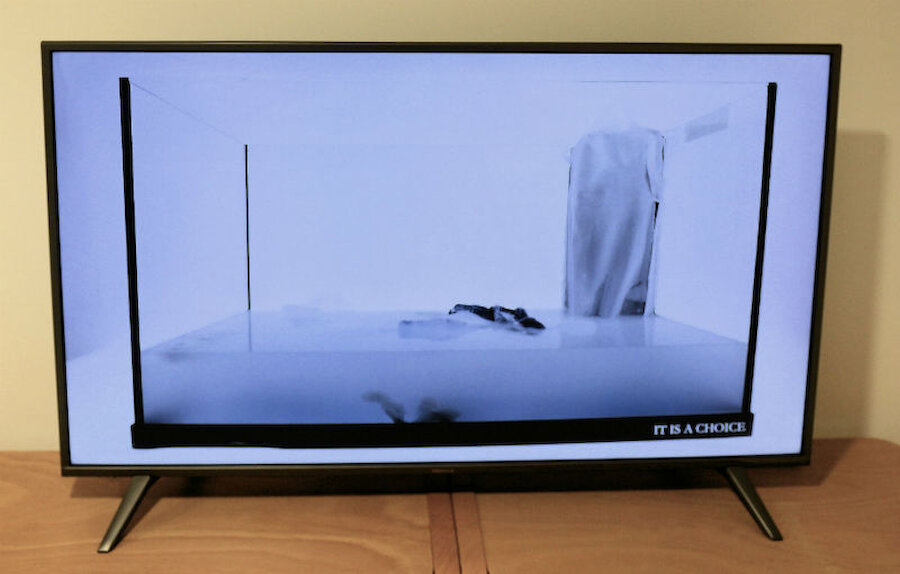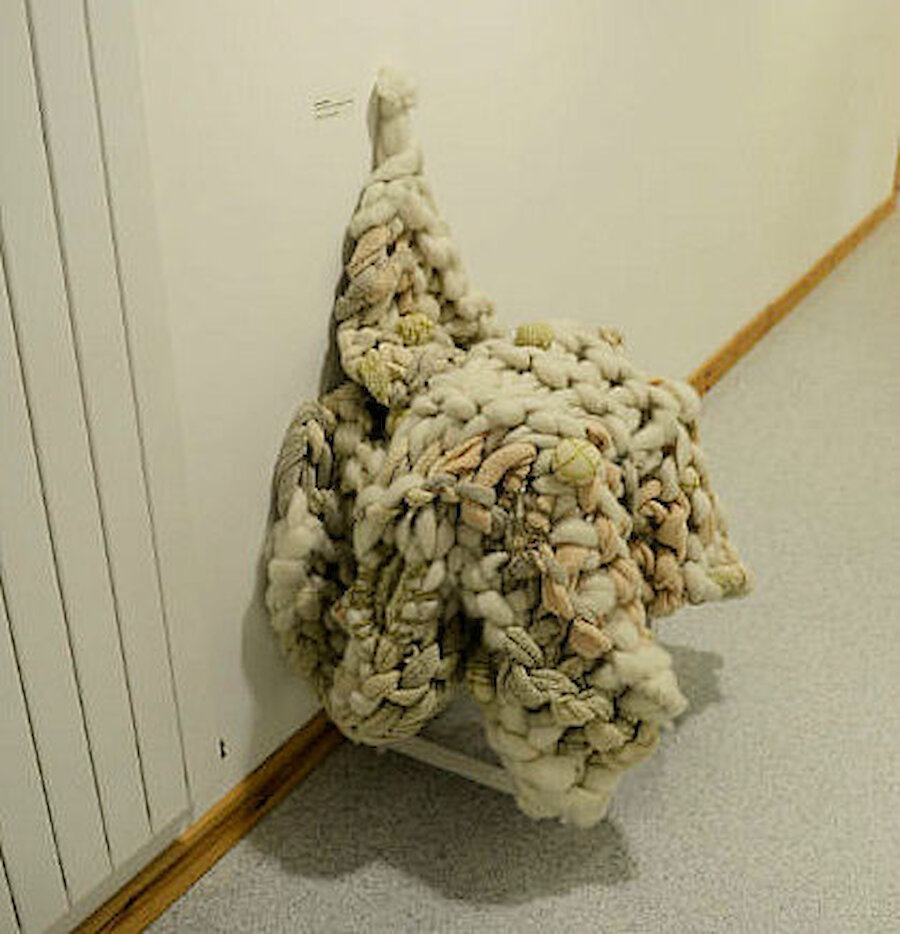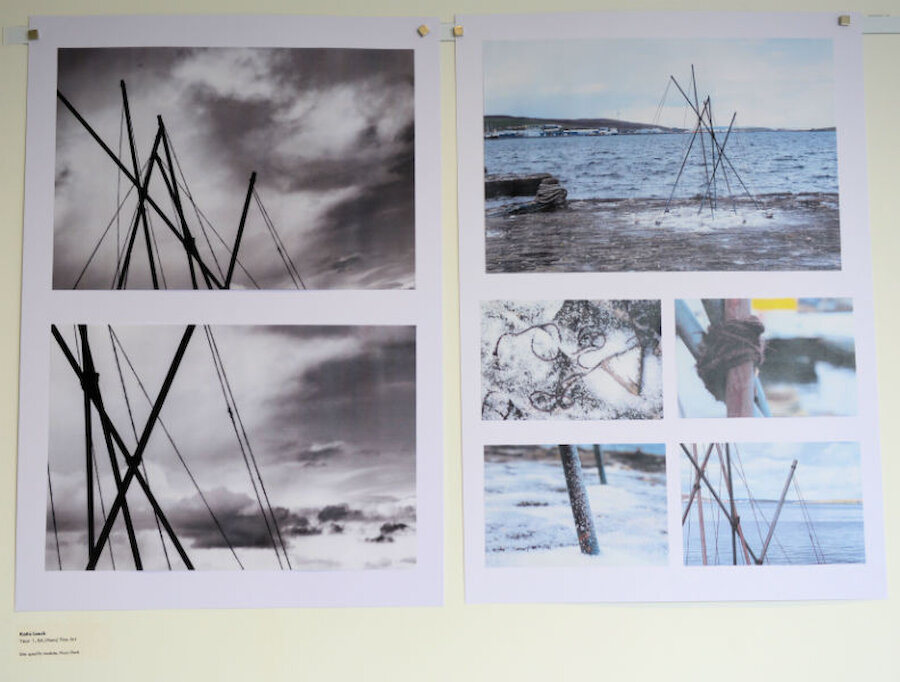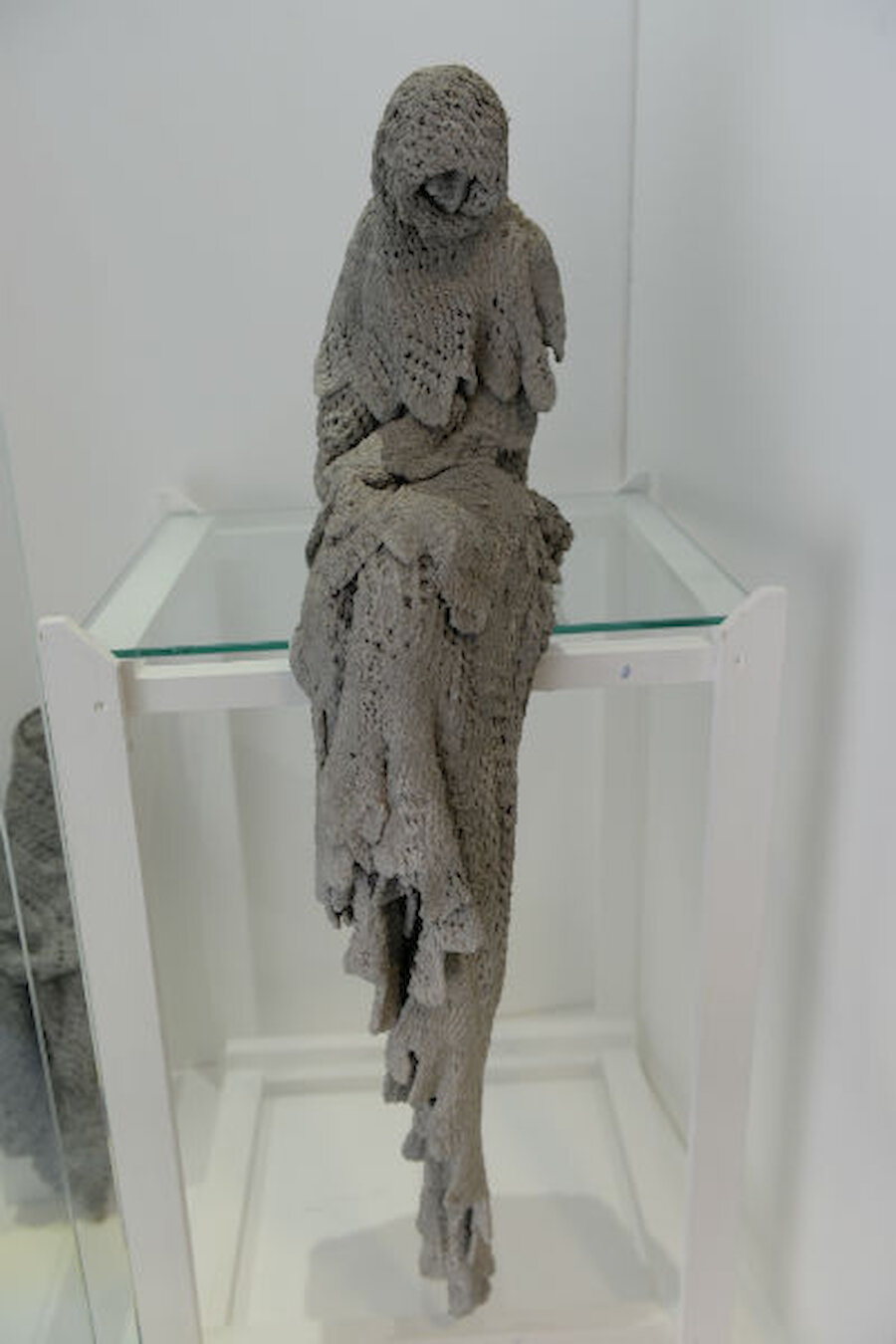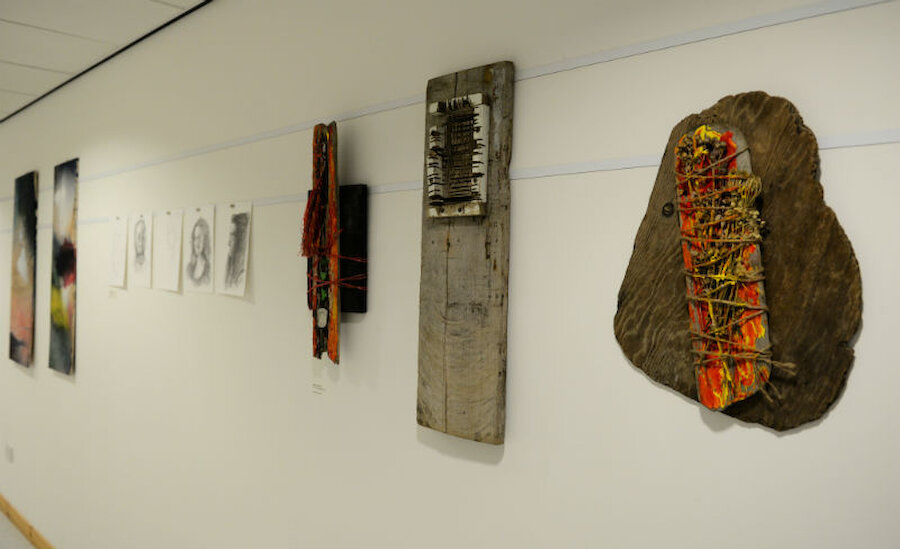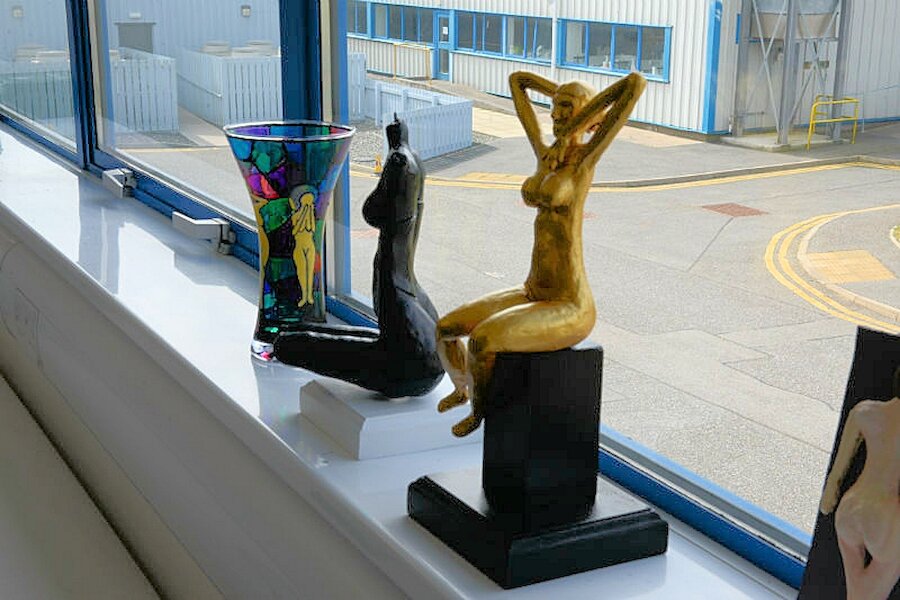The event, which featured speeches and prize-giving, offered a comprehensive overview of students’ progress, including the BA (Hons) Contemporary Textiles degree show, as well as work in progress from Year 1, 2 and 3 students. There was also an impressive display from students pursuing the National Certificate Art and Design course, which focuses on building portfolios to ensure graduates go on to study at degree level in their specialist field of art or design. Other courses, including Vocational Pathways, were also well represented.
The BA (Hons) Fine Art course is now in its third year and students exhibited a selection of work. It’s a modular course, and, as course leader Paul Bloomer explained, it covers a very wide range of disciplines and skills. There are six modules, each 200 hours long, namely “a drawing module, a print-making module, a photography module, a painting module, a textual studies module – which is basically history and theories of art – and also a module called spatial practice”
Students begin to specialise in their chosen area in the second year of the course, perhaps in painting, photography, digital media, or printmaking. The course involves tutorials and workshops. “This year, we did aquatint etching and something called ‘materiality’, which is basically thinking about textures and surfaces from a painting perspective.”

